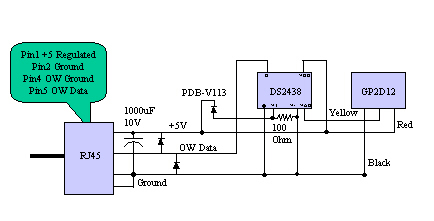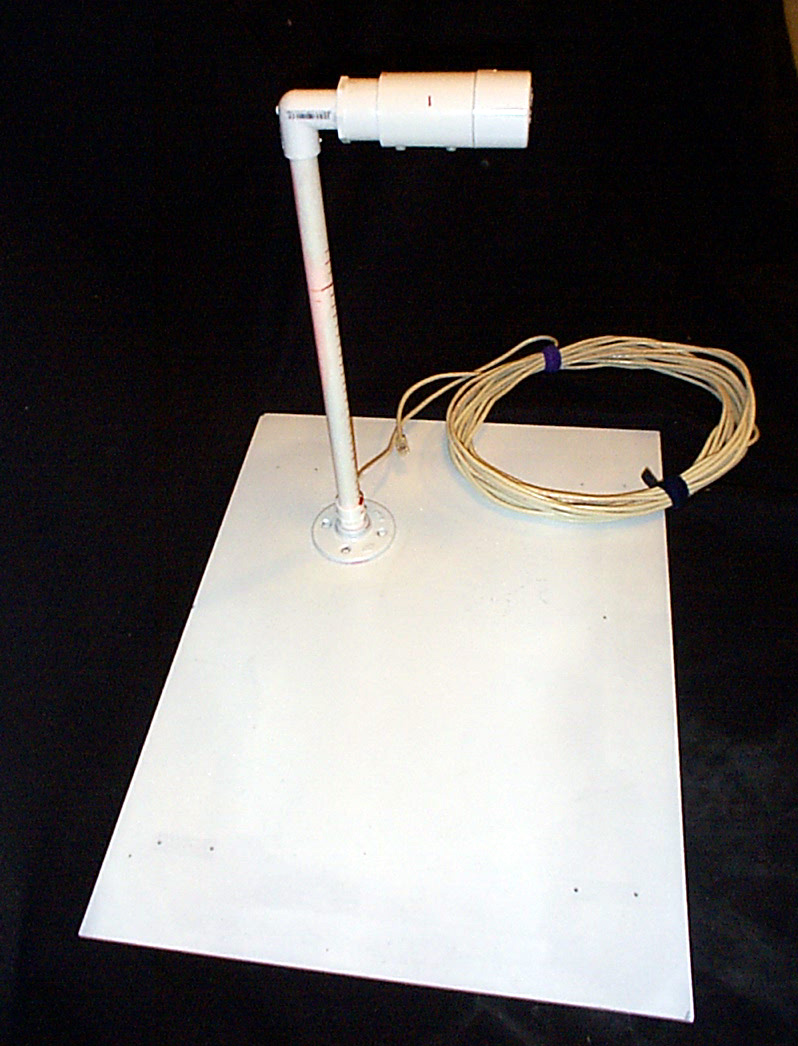
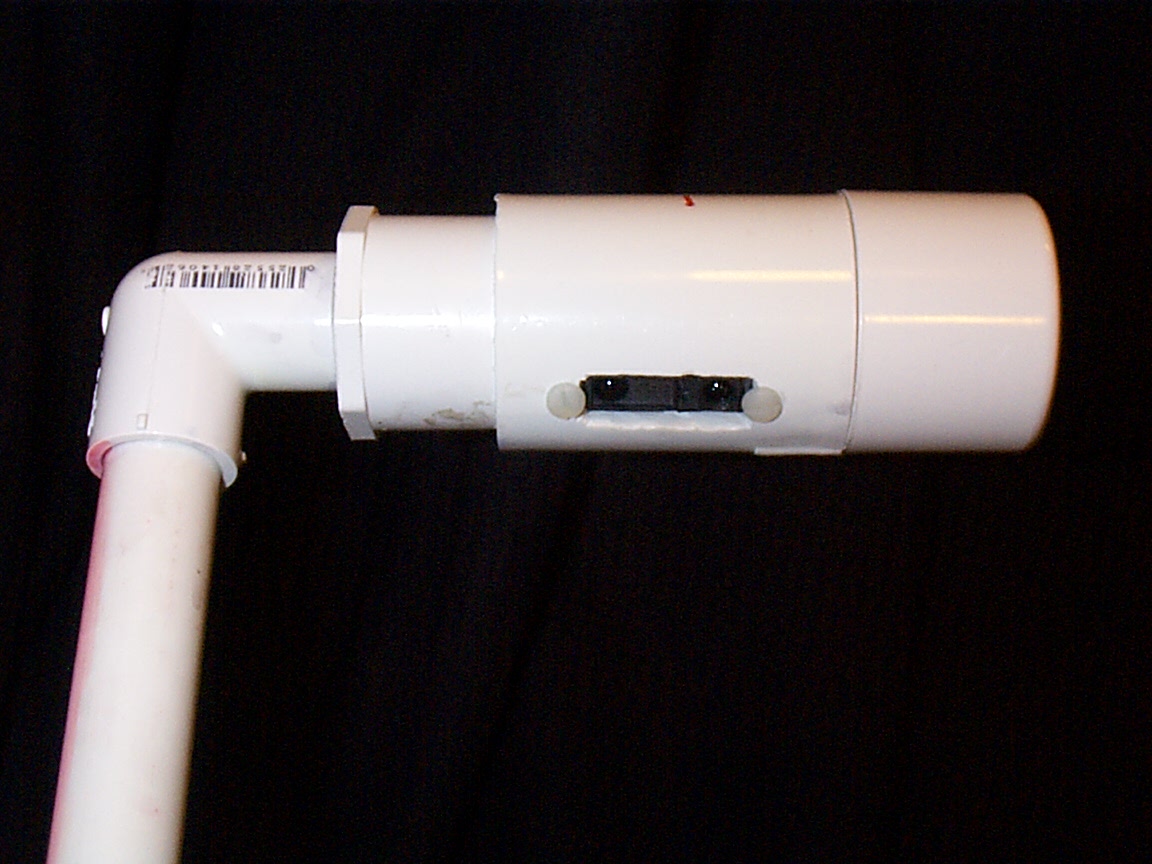
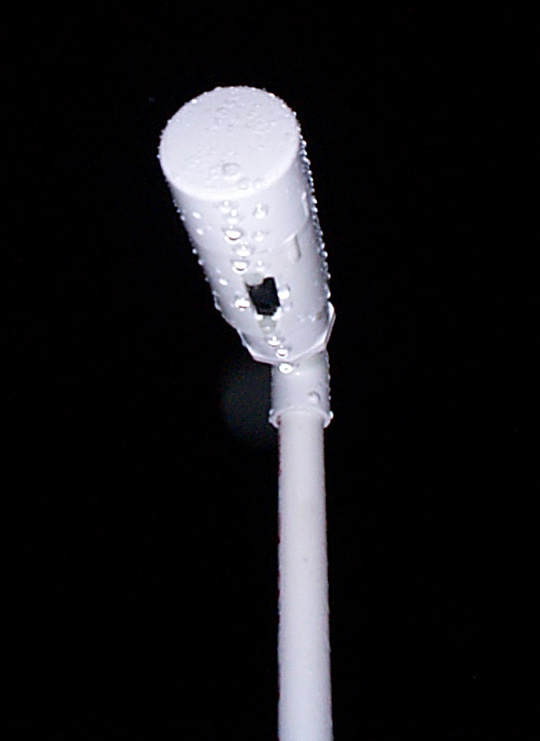
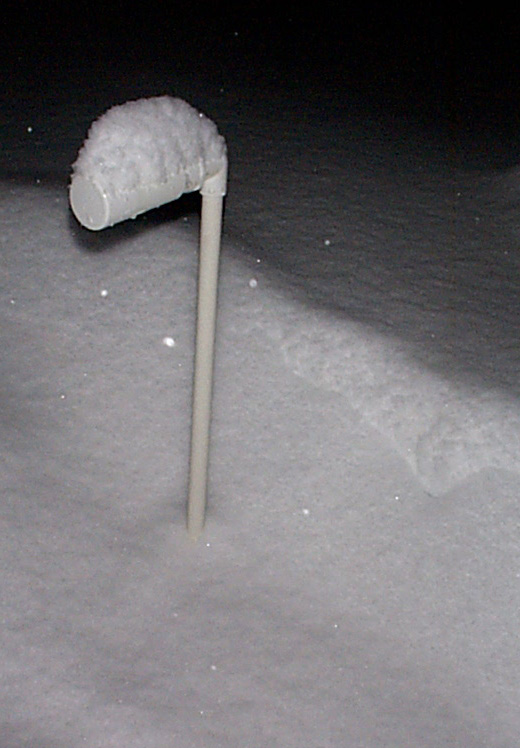
What surprised me was the inconsistency of how people / agencies measure snowfall.
The local TV station uses a snow board which they clear after every
inch of snow. Other people say you have to clear the board at least once
a day but no more than four times a day.
Mother Nature also makes measuring snowfall interesting because of drifting, compresssion,
and melting.
Here are some snow measurement references I found on the web:
I was interested in how much snow was on the ground and at what rate it was falling and melting. I thought developing a sensor that measured this continuously would be of interest. If the sensor could be made inexpensively, then the power of the Internet could be used to collect a large number of samples over large areas.
The popular weather data collections sites ( Weather Underground, Citizen Weather Observer Program) currently don't provide fields for snowfall, but this is changing. I noticed that WeatherMatrix has started a beta system for reporting snowfall.
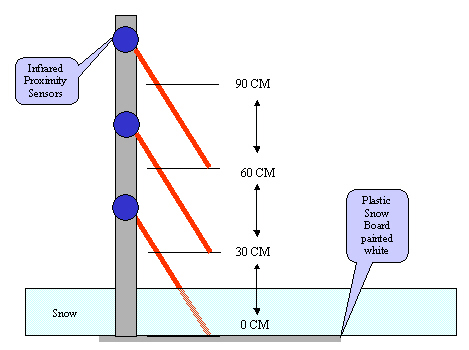
There are two classes of inexpensive devices available for making non-contact distance measurements.
Ultrasonic sensors have a wide beam so it is hard to focus them on a particular area. They need to be mounted perpendicular to the snow surface. The speed of sound changes with the temperature, so for accurate readings the sensor must be temperature compensated. I chose the Sharp GP2D12 infrared triangulation measurement sensor. It has a lower cost, smaller foot print, and has a roughly 3cm spot size. It is available from Acroname for less than $12. It works on the principal of triangulation. An infrared LED emits a beam of light. If an object is in range, the light is reflected back to the detector. The detector lense focuses the reflected light onto a linear CCD array. The location that the reflected lights hits the detector is dependent on the distance of the object from the sensor.
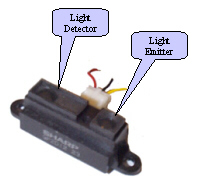
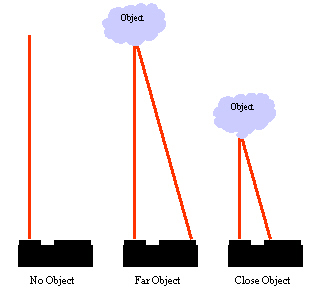
The GP2D12 outputs a non-linear analog voltage corresponding to the distance of the reflective object. The Sharp specification chart below shows the relationship. The sensor can measure in the range from 10-80 cm. The voltage is approximately 2.4V at 10cm and at 0.52 at 60cm. The sensor draws about 34mA. The maximum is stated to be 50mA. The beam spot size is 2-3cm.
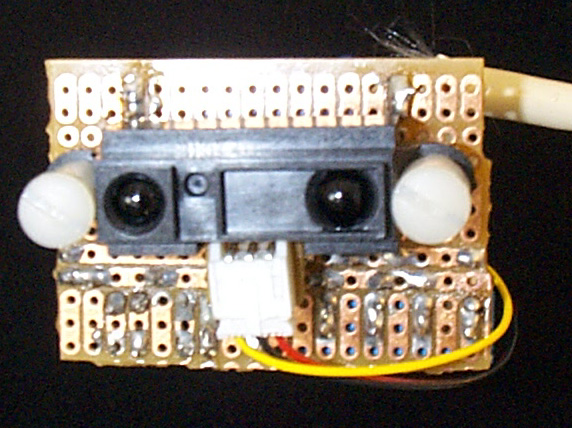
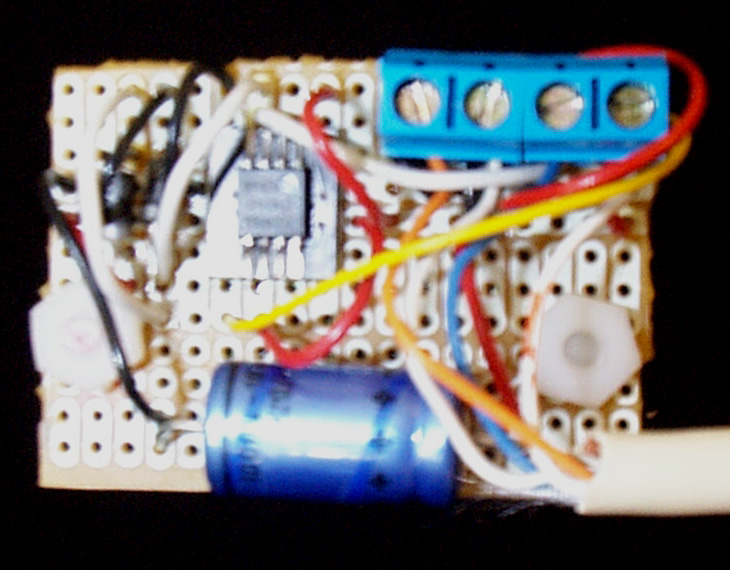
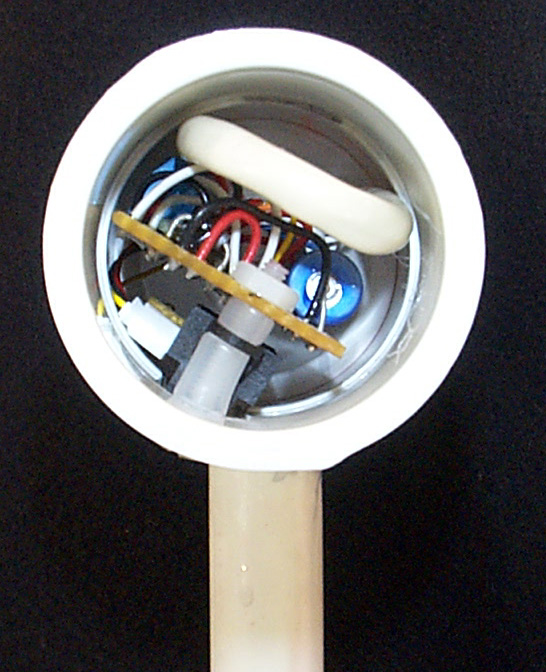
In my first attempt I decided to use a DS2450 1-Wire Quad A/D converter. The input range can be programmed to 2.55V with 15bits which matched the GP2D12 output pretty well.

I ended up building a small 5V regulated power supply that injects the +5 and ground on unused wires in the CAT-5 cable with RJ-45 connectors that goes out to the snow sensor. AAG makes the TAI8530 1-Wire Power Supply, but it has been out of stock. The down side of providing power over the CAT-5 cable is that it appears to add noise and limit the distance the 1-Wire cable can run.
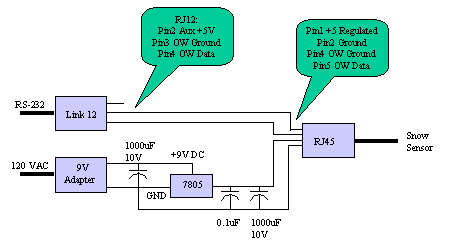
To calibrate the sensor, I raised a white surface to every cm in the measurement range and took two minutes of data. Even though the data is noisy, The mean from of the sample is sufficient to uniquely identify the distance / voltage relationships. The measurements were taken at 68F.
A polynomial was then fitted to the means of each of the 0-33cm range values.
I have found that TCL provides an interpretive development environment that runs on many platforms. It's pretty easy to write routines to communicate with the 1-Wire devices using THE LINK. TCL also makes it easy to FTP or HTTP weather data to Internet sites.
You can download the following free software packages:
Here is some sample TCL code that communicates with THE LINK to configure and read the DS2450 AD Converter. To make a measurement you would send something similar to: ReadSnow "com1:" "6f000000037a2220"
A second prototype, built with a DS2438 has an added light sensor and thermometer to compensate the Sharp sensor for the sun and temperature. From the specification sheets I originally didn't think the DS2438 AD converter would be accurate with the low voltages. But tests so far seem to show it is similar to the DS2450.
